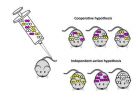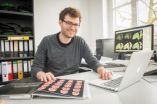(Press-News.org) TORONTO, ON — A joint study by researchers at the University of California San Diego and the University of Toronto has found that a computer system spots real or faked expressions of pain more accurately than people can. The work, titled "Automatic Decoding of Deceptive Pain Expressions," is published in the latest issue of Current Biology.
"The computer system managed to detect distinctive dynamic features of facial expressions that people missed," said Marian Bartlett, research professor at UC San Diego's Institute for Neural Computation and lead author of the study. "Human observers just aren't very good at telling real from faked expressions of pain."
Senior author Kang Lee, professor at the Dr. Eric Jackman Institute of Child Study at the University of Toronto, said "humans can simulate facial expressions and fake emotions well enough to deceive most observers. The computer's pattern-recognition abilities prove better at telling whether pain is real or faked."
The research team found that humans could not discriminate real from faked expressions of pain better than random chance – and, even after training, only improved accuracy to a modest 55 percent. The computer system attains an 85 percent accuracy.
"In highly social species such as humans," said Lee, "faces have evolved to convey rich information, including expressions of emotion and pain. And, because of the way our brains are built, people can simulate emotions they're not actually experiencing – so successfully that they fool other people. The computer is much better at spotting the subtle differences between involuntary and voluntary facial movements."
"By revealing the dynamics of facial action through machine vision systems," said Bartlett, "our approach has the potential to elucidate 'behavioral fingerprints' of the neural-control systems involved in emotional signalling.
The single most predictive feature of falsified expressions, the study shows, is the mouth, and how and when it opens. Fakers' mouths open with less variation and too regularly.
"Further investigations," said the researchers, "will explore whether over-regularity is a general feature of fake expressions."
In addition to detecting pain malingering, the computer-vision system might be used to detect other real-world deceptive actions in the realms of homeland security, psychopathology, job screening, medicine, and law, said Bartlett.
"As with causes of pain, these scenarios also generate strong emotions, along with attempts to minimize, mask, and fake such emotions, which may involve 'dual control' of the face," she said. "In addition, our computer-vision system can be applied to detect states in which the human face may provide important clues as to health, physiology, emotion, or thought, such as drivers' expressions of sleepiness, students' expressions of attention and comprehension of lectures, or responses to treatment of affective disorders."
INFORMATION:
To read about the study in Current Biology, visit: http://www.cell.com/current-biology/abstract/S0960-9822(14)00147-X.
For more information, contact:
Kang Lee
University Distinguished Professor
Dr. Eric Jackman Institute of Child StudyUniversity of Toronto
kang.lee@utoronto.ca http://www.kangleelab.com
NOTE: Prof. Lee is out of the country but is available for interviews via e-mail
Dominic Ali
Media Relations Officer
University of Toronto
Tel: 416-978-6974
d.ali@utoronto.ca
Computers spot false faces better than people
2014-03-21
ELSE PRESS RELEASES FROM THIS DATE:
Characteristics of lung cancers arising in germline EGFR T790M mutation carriers
2014-03-21
DENVER –Two studies are providing new insight into germline epidermal growth factor receptor (EGFR) T790M mutation in familial non-small cell lung cancer (NSCLC). The findings suggest the need for tailored approaches for early detection and treatment, as well as for genetic testing to identify carriers.
"These studies now solidify the fact that routine clinical management of lung cancer now has to include the awareness of this inherited cancer syndrome," wrote David P. Carbone, MD, PhD, President-Elect of the International Association for the Study of Lung Cancer ...
Ground-improvement methods might protect against earthquakes
2014-03-21
WEST LAFAYETTE, Ind. — Researchers from the University of Texas at Austin's Cockrell School of Engineering are developing ground-improvement methods to help increase the resilience of homes and low-rise structures built on top of soils prone to liquefaction during strong earthquakes.
Findings will help improve the safety of structures in Christchurch and the Canterbury region in New Zealand, which were devastated in 2010 and 2011 by a series of powerful earthquakes. Parts of Christchurch were severely affected by liquefaction, in which water-saturated soil temporarily ...
Forests crucial to green growth
2014-03-21
NAIROBI, Kenya (21 March 2014) ----The value of forests and tree-based ecosystems extends far beyond carbon sequestration; they are the foundation of sustainable societies.
A new report, launched in Jakarta, Indonesia on 21 March - the International Day of Forests – promotes REDD+ and the Green Economy as together providing a new pathway to sustainable development that can benefit all nations. It claims this approach can conserve and even boost the economic and social benefits forests provide to human society.
Building Natural Capital – How REDD+ Can Support a Green ...
Pathogens in cheese
2014-03-21
Listeria is a rod-shaped bacterium highly prevalent in the environment and generally not a threat to human health. One species however, Listeria monocytogenes, can cause listeriosis, a very dangerous disease. This pathogen can be present in raw milk and soft cheeses, smoked fish, raw meat and ready-to-eat products. In Austria, health care providers are required to report all cases of listeriosis, which can be fatal particularly for patients with weakened immune systems. In 2009 and 2010, a dairy in Hartberg (Styria, Austria) produced Quargel cheese contaminated with Listeria ...
In rats, diffuse brain damage can occur with no signs of 'concussion,' reports study in Neurosurgery
2014-03-21
Philadelphia, Pa. (March 21, 2014) – A standard experimental model of concussion in rats causes substantial brain damage—but no behavioral changes comparable to those seen in patients with concussion, reports a study in the April issue of Neurosurgery, official journal of the Congress of Neurological Surgeons. The journal is published by Lippincott Williams & Wilkins, a part of Wolters Kluwer Health.
The results highlight the "disconnect" between preclinical and clinical studies of concussion, according to the report by Dr. Charles L. Rosen of West Virginia University, ...
Genetic evidence for single bacteria cause of sepsis identified for the first time
2014-03-21
An international team of academics, including Professor Marco Oggioni from the University of Leicester's Department of Genetics, has studied how localised infections can turn into the dangerous systematic disease sepsis – and has identified for the first time through genetic evidence that a single bacteria could be the cause.
The study, which has been published in the academic journal PLOS Pathogens, examined the events that lead to sepsis by Streptococcus pneumoniae (pneumococcus), a major human pathogen, in mice. They found that in most cases the bacteria causing sepsis ...
Lightweight construction materials of highest stability thanks to their microarchitecture
2014-03-21
This news release is available in German. KIT researchers have developed microstructured lightweight construction materials of highest stability. Although their density is below that of water, their stability relative to their weight exceeds that of massive materials, such as high-performance steel or aluminum. The lightweight construction materials are inspired by the framework structure of bones and the shell structure of the bees' honeycombs. The results are now presented in the journal PNAS, DOI: 10.1073/pnas.1315147111.
"The novel lightweight construction materials ...
New method can diagnose a feared form of cancer
2014-03-21
The poor prognosis for pancreatic cancer, where only 5 percent of the patients survive five years after the diagnosis, is due to the fact that the tumors often develop unnoticed, and rarely cause symptoms until they have spread to other organs. Recent studies, however, have shown that fluid-filled compartments in the pancreas, called cysts, may be precursors of the cancer.
Cysts in the pancreas, which are found in every 10th person above the age of 70, and are also common in younger people, can be discovered with computed tomography (CT) or magnetic resonance imaging ...
Genetic factor contributes to forgetfulness
2014-03-21
Misplaced your keys? Can't remember someone's name? Didn't notice the stop sign? Those who frequently experience such cognitive lapses now have an explanation. Psychologists from the University of Bonn have found a connection between such everyday lapses and the DRD2 gene. Those who have a certain variant of this gene are more easily distracted and experience a significantly higher incidence of lapses due to a lack of attention. The scientific team will probably report their results in the May issue of "Neuroscience Letters," which is already available online in advance.
Most ...
Salivary biomarkers of gingivitis: Information important for personalized decision-making
2014-03-21
Alexandria, Va., USA – Today during the 43rd Annual Meeting & Exhibition of the American Association for Dental Research, held in conjunction with the 38th Annual Meeting of the Canadian Association for Dental Research, Craig Miller, University of Kentucky, Lexington, will present research titled "Salivary Biomarkers of Gingivitis: Information Important for Personalized Decision-Making."
Salivary biomarkers have been studied to help determine the presence, risk, and progression of periodontal disease. However, clinical translation of salivary biomarkers from bench to ...



